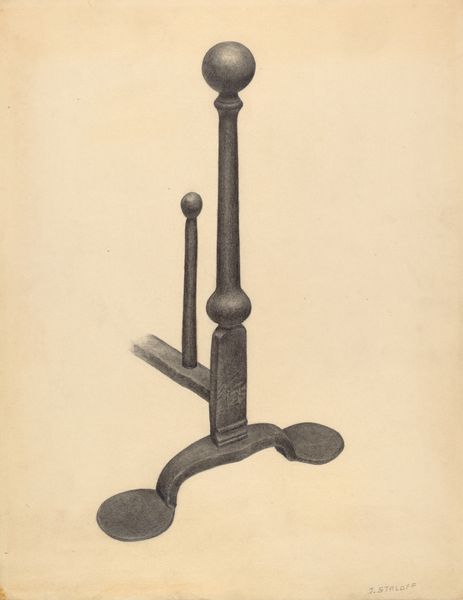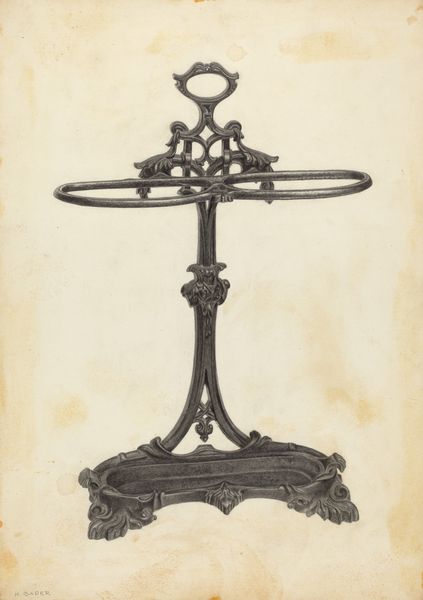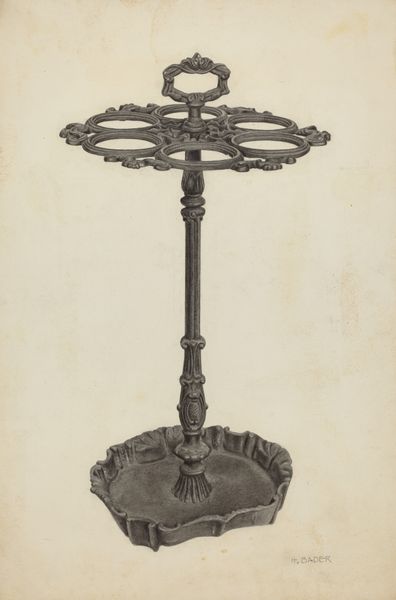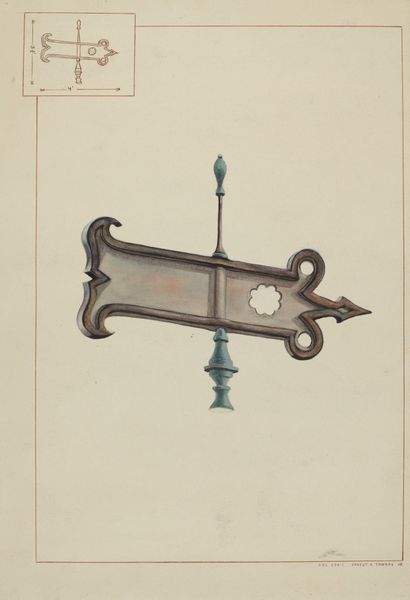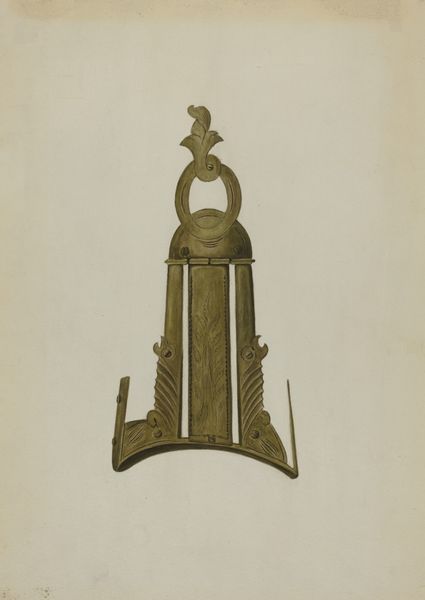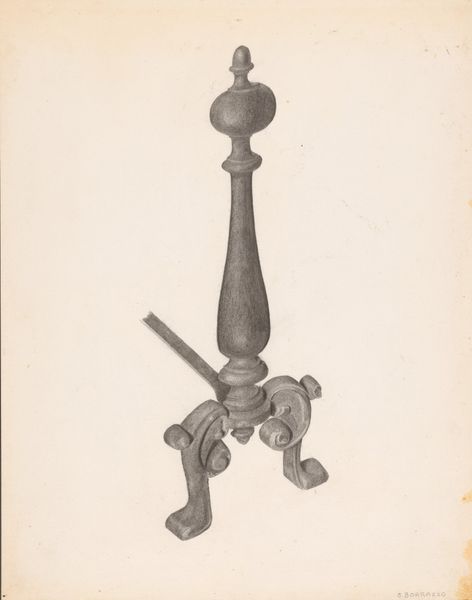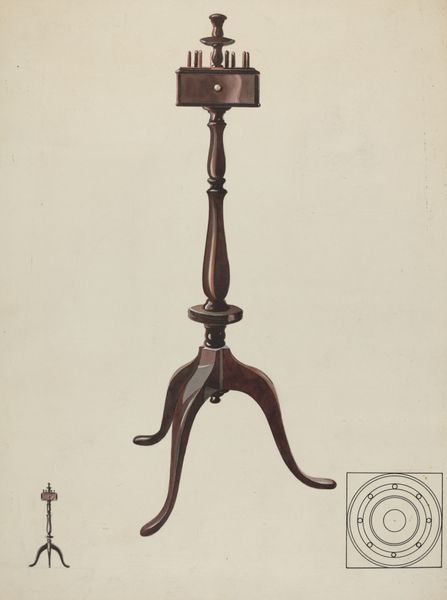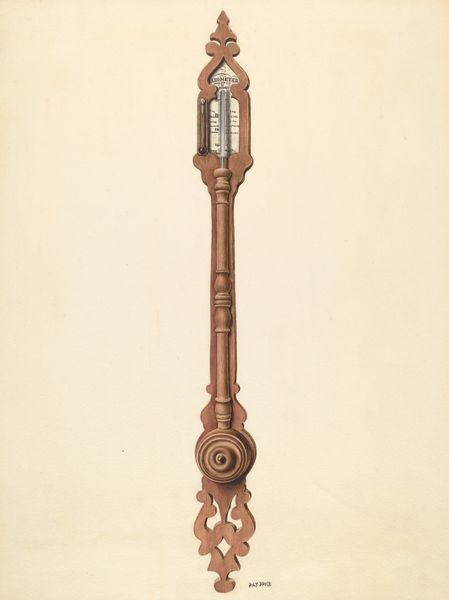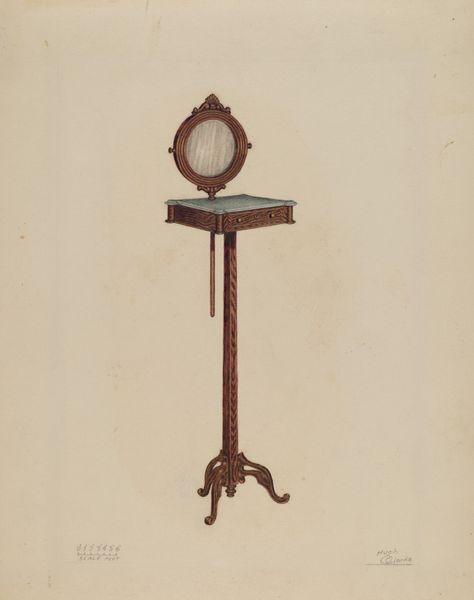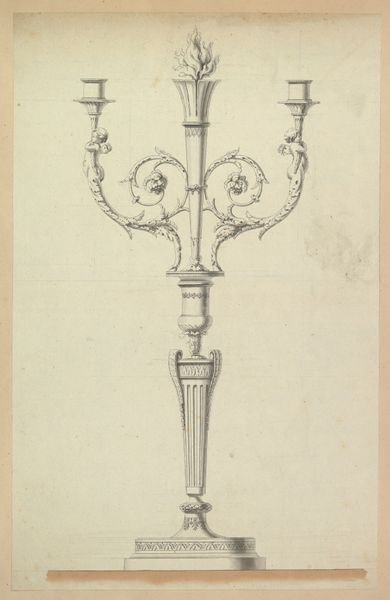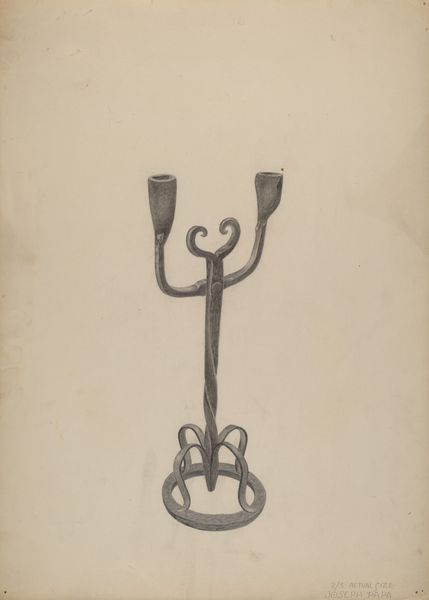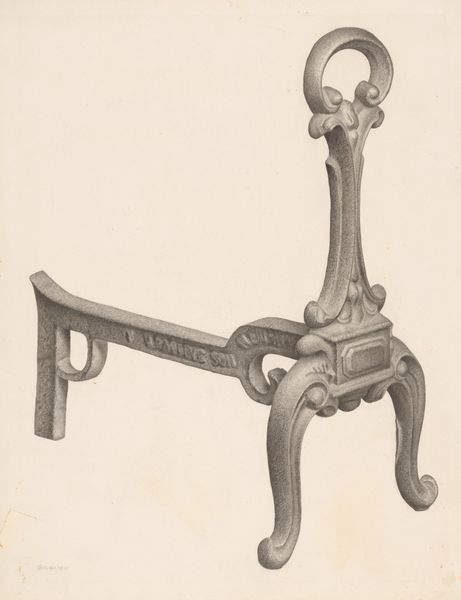
drawing, pencil
#
drawing
#
pencil sketch
#
form
#
pencil
#
line
#
sketchbook drawing
#
realism
Dimensions: overall: 35.2 x 24.5 cm (13 7/8 x 9 5/8 in.) Original IAD Object: 36" wide; 54" high
Copyright: National Gallery of Art: CC0 1.0
Editor: So, this is Elmer Weise’s pencil drawing, “Weather Vane,” from around 1936. It feels very precise and deliberate to me, like a technical drawing almost, despite being an artistic rendering. What do you see in this piece, particularly in relation to its historical moment? Curator: I see a reflection of a society grappling with uncertainty and change. The weather vane itself, traditionally a symbol of direction and guidance, here appears static, almost monumental. Consider the 1930s; the Great Depression was devastating communities. Does this carefully rendered drawing speak to a desire for stability in a turbulent era? Editor: That's interesting. I hadn't thought about the context of the Depression. Do you think the choice of subject matter, a weather vane, could also symbolize a yearning for control over external forces? Curator: Precisely. Weather vanes are about anticipating and adapting to environmental changes. Yet, whose weather are we tracking, and who benefits from that knowledge? Think about the distribution of resources during that time and consider how access to information, like weather patterns for agricultural planning, could reinforce existing power structures. Weise may not have explicitly intended this critique, but the drawing inadvertently captures these dynamics. Editor: I see what you mean. It's almost as if the weather vane becomes a symbol of privilege, rather than just a common tool. Does the swan motif contribute to that symbolism at all? Curator: Definitely. The swan adds a layer of elegance and perhaps even aristocracy to the otherwise functional object. Swan symbology varies across different cultures but in Western iconography, it has long signified grace, beauty, and even a kind of removed, regal serenity. That’s in contrast with the daily realities of those suffering during the Depression, furthering the artwork's subtle but poignant social commentary. Editor: I hadn't considered the class implications embedded in the artwork’s visual vocabulary. That's given me a lot to think about. Curator: Indeed. And it reminds us that even seemingly simple drawings can unveil complex intersections of art, history, and social critique.
Comments
No comments
Be the first to comment and join the conversation on the ultimate creative platform.
